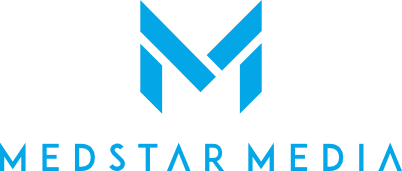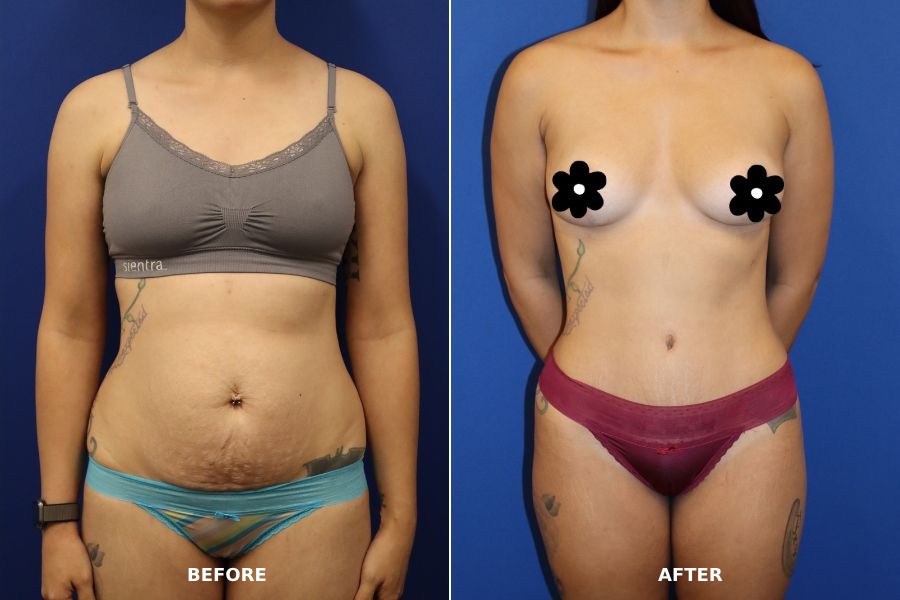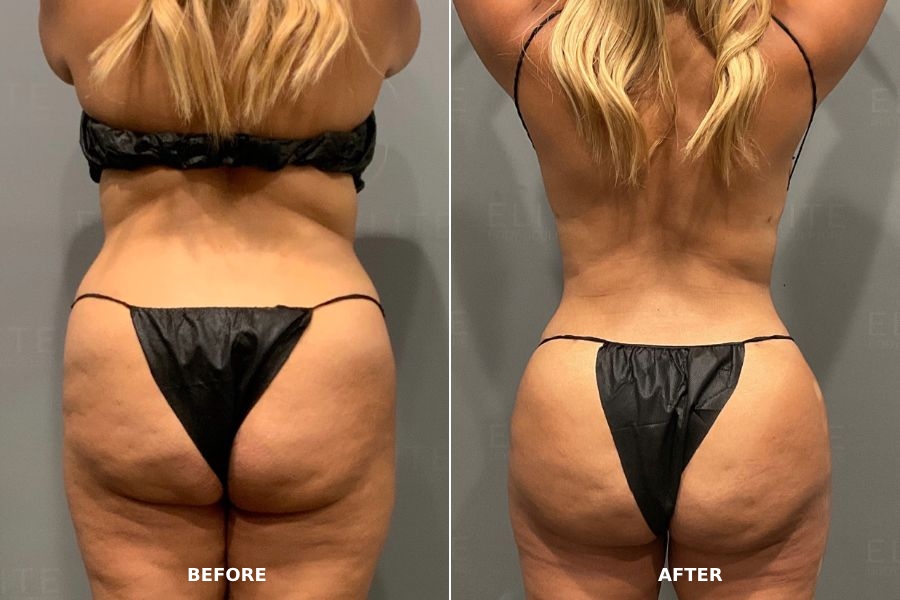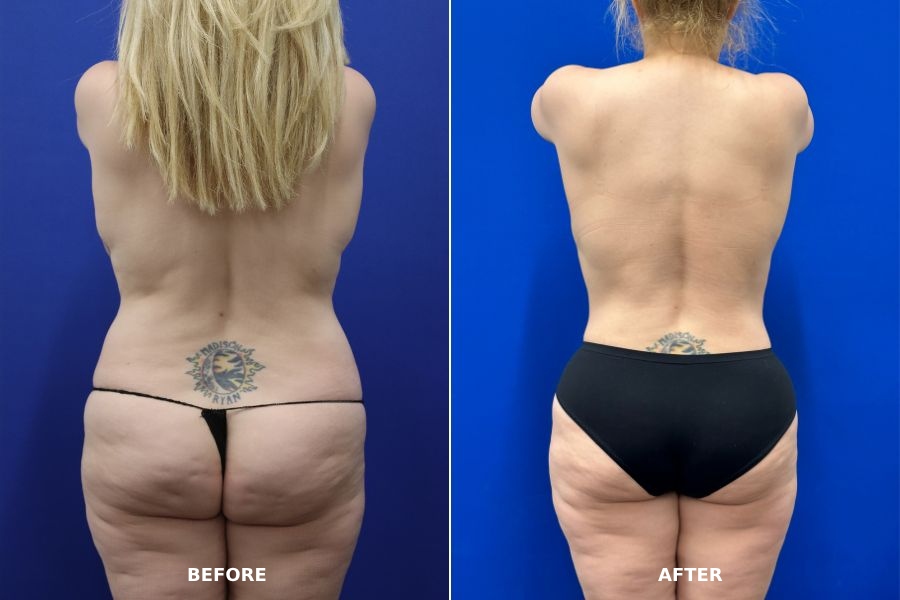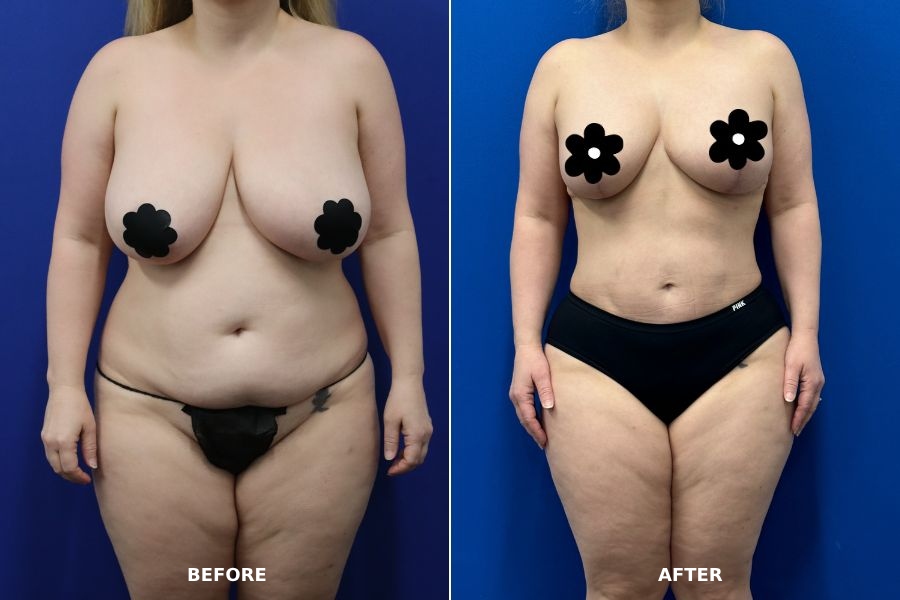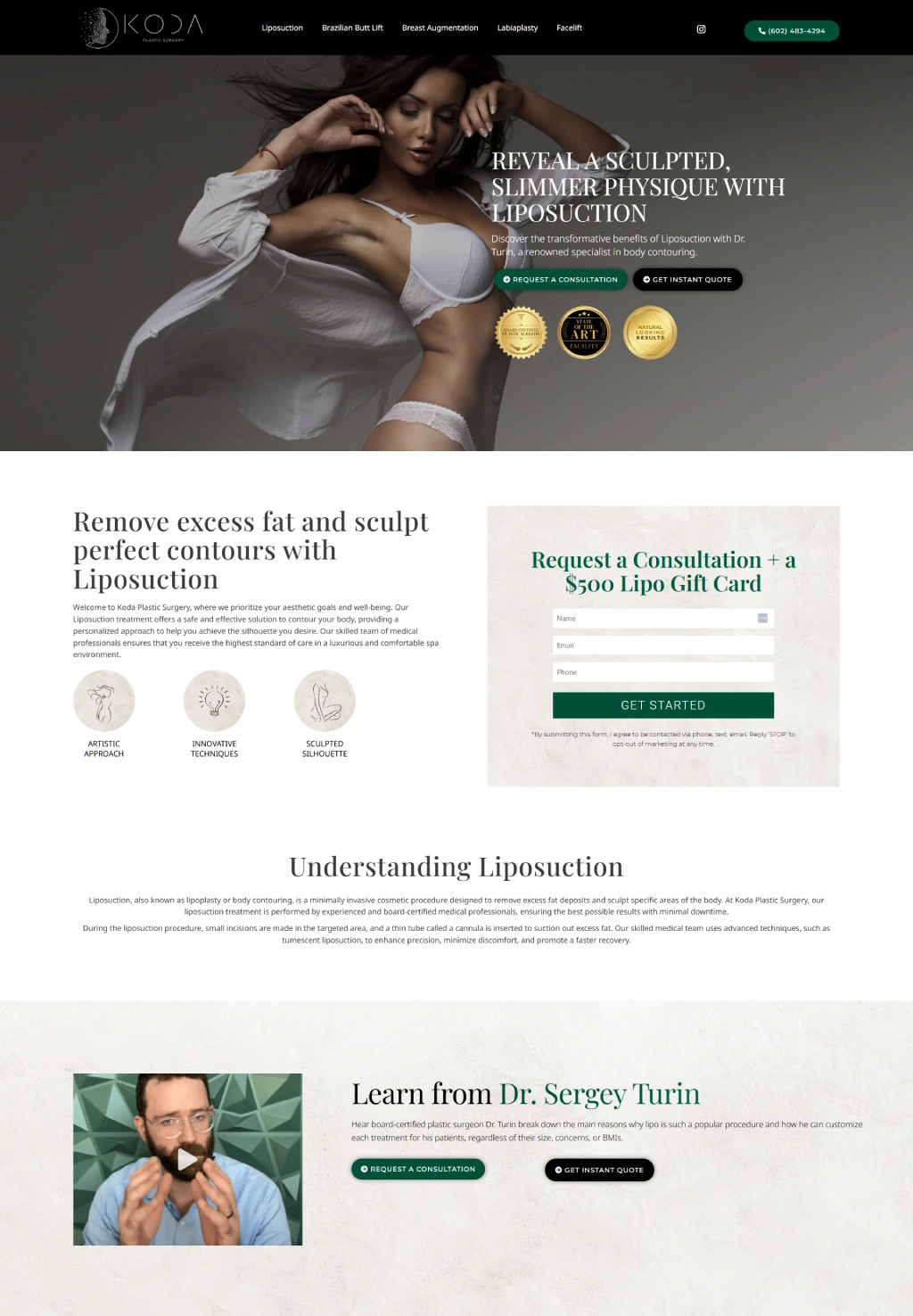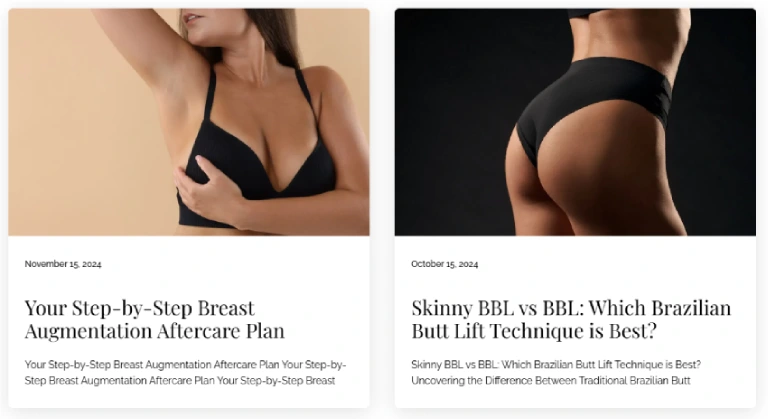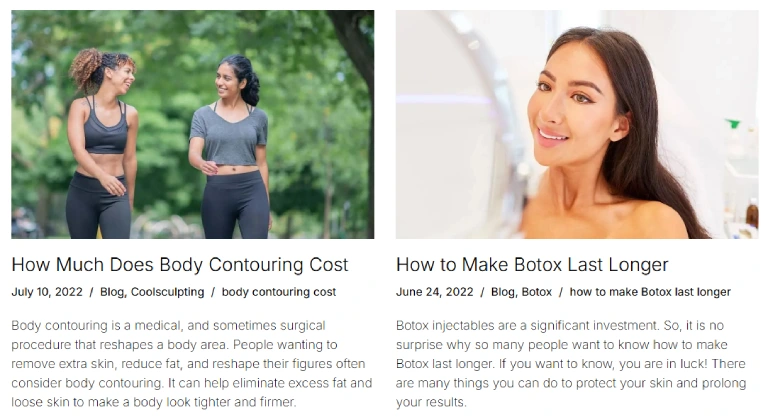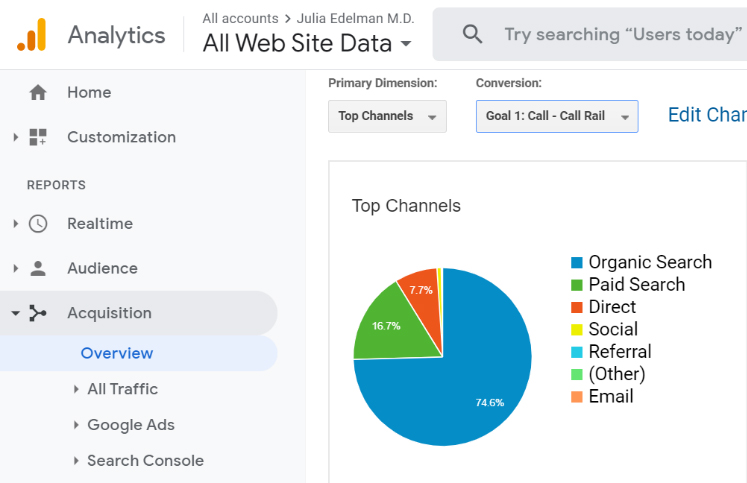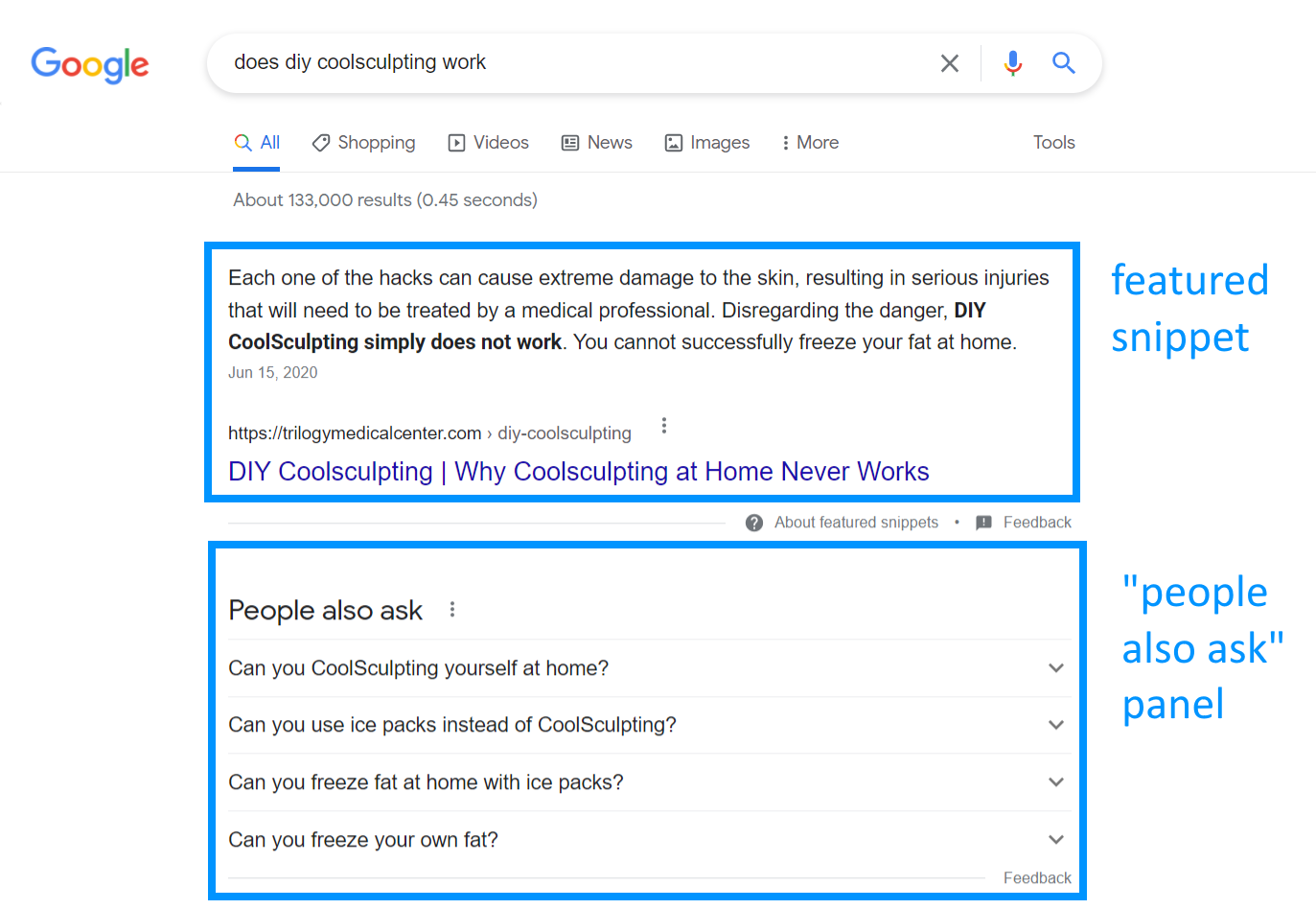Plastic Surgery Marketing Strategies
Marketing Tips and Ideas Guaranteed to Grow Your Practice
So, How Should You Approach Plastic Surgery Marketing Today?
#1 Building Your Plastic Surgery Brand
Create an Authentic Plastic Surgery Brand Message
Design Strong, Eye-Catching Visuals for Your Plastic Surgery Brand
#2 Create an Attractive and Informative Plastic Surgery Website
Why Is Your Plastic Surgery Website So Important?
Your website serves as your ultimate marketing tool. It’s the first point of contact for potential patients, offering them the information they need to feel confident about choosing your practice.
A well-designed website allows you to showcase a variety of media—videos, images, and written content—that help educate and inform visitors. Focusing on clear, easy-to-understand content makes the plastic surgery process less intimidating and more approachable. This builds trust and encourages prospects to take the next step: contacting you for a consultation.
Your website isn’t just a digital presence—it’s the foundation of your marketing strategy and a key driver for connecting with your audience.
Plastic Surgery Website Design
When designing your plastic surgery website, it’s important to consider the role of SEO (Search Engine Optimization) and how SEO content integrates into its structure. A sleek and professional website won’t do much for your practice if potential clients can’t find it. Most prospects searching for a plastic surgeon in your area won’t know you by name, so your website needs to be optimized with strategic keywords and high-quality content to rank well on search engines.
Make Your Plastic Surgery Website Content More Engaging
Your website should be more than just a digital business card—it’s a powerful tool for connecting with potential patients and supporting your plastic surgery marketing efforts. Ask yourself: How can my website serve my audience and showcase my practice?
Start by focusing on what matters most to your visitors. Provide clear, relevant content that answers their questions and piques their interest. Be upfront about the procedures you offer and your clinic’s location—this is critical because most prospects are looking for local providers. Highlighting this information informs and builds curiosity about your services, planting the seeds for future consultations.
Showcasing your specialties on your website will ensure that it reflects your expertise. Share your training, certifications, and experience to establish trust and credibility. Use separate pages to organize information about each procedure you offer. This will make your site easy to navigate and allow visitors to find what they need quickly.
- Surgeon Bios: Introduce yourself and your team to build a connection.
- Procedure and Offer Pages: Highlight services and promotions.
- Awards and Accolades: Showcase your achievements.
- Financing Options: Make procedures feel accessible.
- Extra Services: Mention enhancements like consultations or follow-up care.
- A Regularly Updated Blog: Share insights, tips, and news to engage your audience.
#3 Build Strong Plastic Surgery Landing Pages
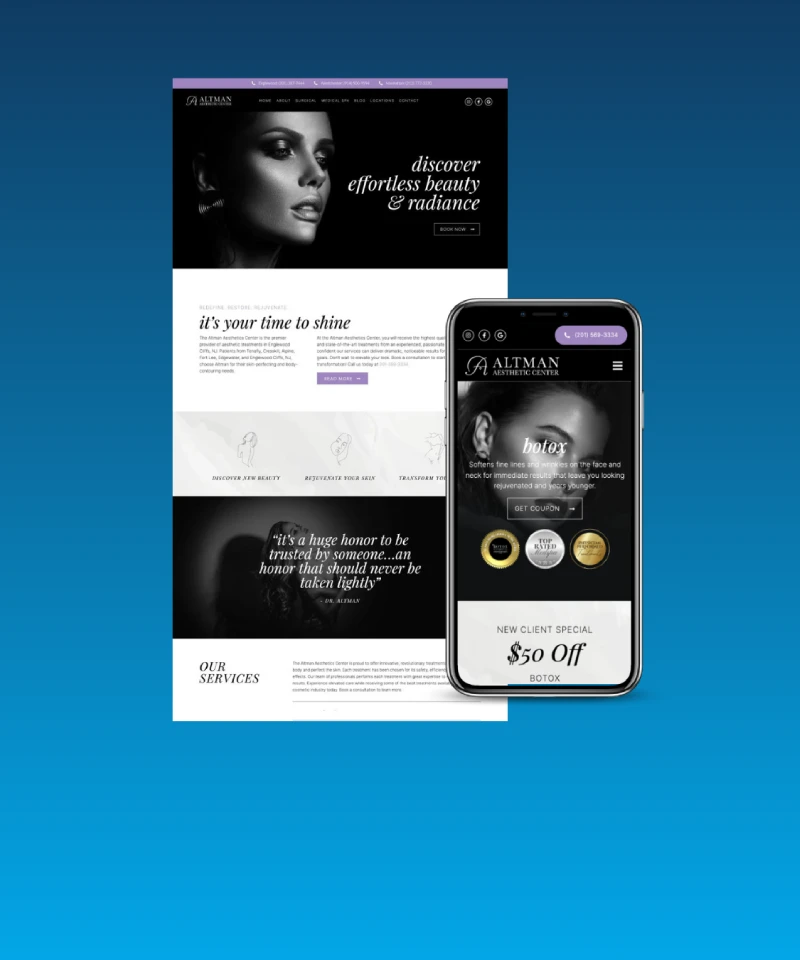
- Subscribe to a Blog or Email List: Stay connected with prospects by providing valuable updates.
- Download Educational Resources: Offer guide or procedure FAQs to help visitors learn more.
- Request More Information: Encourage visitors to reach out with specific questions.
- Schedule a Consultation: Make it easy for potential patients to take the next step.
- Join a Loyalty or Rewards Program: Build ongoing relationships with your clients.
- Sign Up for a Special Event: Promote open houses or informational sessions to engage with your audience in person.
Creating Engaging and Effective Landing Page Content
Consider your visitors ‘ time and attention when crafting content for your landing pages. Asking for too much information upfront can turn them away. Instead, keep it simple—request only the essentials, like their name and email address, so you can follow up later. The less effort required, the more likely visitors are to respond.
To encourage action, make your landing page appealing and valuable. Share compelling content like:
- Patient Stories: Real-life experiences that build trust and inspire confidence.
- Helpful Resources: Tip sheets, infographics, or FAQs about popular procedures.
- Engaging Media: Links to videos that educate and connect with your audience.
You can also use special offers to draw people in. For example, a Facebook ad promoting a free underarm hair removal session could bring them through your doors. Once they’re in, you can introduce other services like injectables or elective procedures they might already consider. These promotions are a great way to engage new clients and build long-term relationships.
The key is to create landing pages that are inviting, focused, and valuable to your audience. This will make it easy for them to take the next step with your practice.
#4 Provide a Fully SEO-Optimized Plastic Surgery Blog to Engage and Educate Your Audience
A blog can be one of the most effective tools for marketing your plastic surgery practice. Many potential patients start their journey by researching procedures online, and blogs are often their go-to resource for reliable information. Creating a blog with relevant, engaging content educates your audience, draws attention to your clinic, and builds trust with prospective clients.
Use your blog to share insights about your procedures, address common questions, and highlight your expertise. The more valuable and relatable your content, the more likely readers will connect with your practice and take the next step.
Why Your Blog Is a Powerful Marketing Tool
Your blog should be considered one of the most valuable assets in your inbound marketing strategy. It’s a platform where you can position yourself as an expert, connect with potential patients, and educate them about the wide range of procedures you offer.
Beyond building trust and authority, a well-maintained blog boosts your search engine rankings by consistently producing indexable content. This increases your visibility online, making it easier for prospects to find you.
Additionally, an informative blog benefits your visitors by improving their understanding of various procedures. This often leads to more productive consultations, as patients come in with a clearer idea of what they want and what to expect. Your blog isn’t just content—it’s a bridge that connects your expertise with the needs of your audience.
What Makes a Great Plastic Surgery Blog
A great blog doesn’t just share information—it connects with readers meaningfully. To achieve this, approach your blog content with purpose and focus on topics that genuinely matter to your patients. Start by educating your audience about popular surgical and nonsurgical procedures, as they’re often curious about.
Don’t stop there! Consider writing about the latest advancements in plastic surgery. This highlights your expertise and makes your blog a trusted and up-to-date resource. The best blogs are so valuable that readers are eager to share them with others.
Here are a few ways to make your blog more engaging and personal:
- Share lifestyle tips: Offer advice on skincare, healthy eating, and exercise to build loyalty and trust.
- Announce updates: Share news about your clinic, like new services or technologies.
- Highlight achievements: Tell readers about any awards or recognitions you’ve earned for your practice and staff.
- Introduce your team: Showcase new staff members or facilities to create a personal connection with readers.
- Share patient stories: Use case studies to highlight your work (while respecting HIPAA guidelines).
- Think outside the box: Explore creative formats, like videos or infographics, to make your posts more dynamic and shareable.
The goal is to provide consistent, high-quality content that keeps your readers returning for more. Over time, this will help grow your audience, strengthen your reputation, and foster excitement about your practice.
If you already have a blog that is not performing as well as you’d like, consider taking advantage of Medstar Media’s free SEO audit services. Optimizing your site can help it rank higher and increase traffic, giving you an edge in a competitive market.
#5 Elevate Your Plastic Surgery Practice with Paid Online Advertising
When you are ready to expand your plastic surgery clinic’s marketing beyond free online strategies, paid media can be a powerful tool. Investing in paid advertising is a cost-effective way to reach a wider audience and showcase your practice's services.
Here are some of the most effective options for paid online advertising tailored to plastic surgery practices. These options can help you connect with potential patients and grow your business.
Pay-Per-Click (PPC) Advertising with Google & Meta Ads
Traditional marketing often involved printing and distributing brochures to a broad audience, most of whom had no interest in plastic surgery. This approach could have been more efficient, wasting time and resources to reach a few potential prospects.
Pay-per-click (PPC) advertising offers a smarter, more targeted solution. Using platforms like Google Ads or Meta (Facebook and Instagram), PPC ensures your advertisements reach people actively searching for services like yours. By targeting specific keywords and locations, your marketing message appears directly to individuals in your area who are most likely to be interested in your practice.
When someone clicks on your ad, they’re taken straight to your website or a landing page you’ve chosen—bringing them one step closer to becoming a patient. Whether you operate a private practice or are part of a larger organization, PPC is a cost-effective way to attract potential clients. You only pay a small fee when someone clicks on your ad, making it an efficient and measurable marketing strategy.
#6 Build a Recognizable Social Media Presence for Your Practice
Today, nearly everyone is on social media, making it a vital part of your plastic surgery marketing plan. By leveraging social platforms, you can build a strong local fan base and connect with the specific demographic groups you want to reach.
Social media allows you to engage with both current clients and potential patients, creating meaningful connections and building trust. It’s also a great way for colleagues and satisfied clients to refer others to your practice, amplifying your reach and reputation.
However, simply having a social media profile isn’t enough to see results. Success requires an intentional strategy and active participation. With a well-thought-out social media campaign, you can position your practice as approachable, professional, and relatable—helping you stand out in a competitive market.
How to Use Social Media Marketing for Plastic Surgery Practices
If used strategically, social media can be an incredibly effective tool for reaching and engaging with your audience. Here are some ideas to help you incorporate social media into your plastic surgery marketing efforts in a way that fits your clinic’s style and goals:
Promote Special Offers: Share discounts or package deals to entice new and returning patients.
- Share Website Content: To drive traffic, post links to your blog, educational articles, or patient resources.
- Answer Common Questions: Address FAQs about procedures to educate your audience and build trust.
- Show Before-and-After Photos: Highlight your expertise and showcase real results (with patient consent).
- Run Surveys and Contests: Engage your followers and keep your page interactive.
- Leverage Instagram: Promote cosmetic healthcare products or MediSpa services with engaging visuals.
- Engage on Facebook: Invite followers to events, post updates, and share educational content. Keep personal and business pages separate.
- Create YouTube Content: Publish short videos explaining procedures, treatments, or products (but avoid graphic surgical footage).
- Run Targeted Ads: Use social media advertising to reach specific demographics and grow your audience.
The key to success is staying active and consistent. Don’t just post once and forget about it—keep the conversation going! Maintaining a visible, engaging presence will build a loyal following and turn followers into future patients.
Grow Your Plastic Surgery Practice with Medstar Media
Effective marketing is essential for any plastic surgery practice looking to grow and thrive. By leveraging the right strategies and tools, you can attract your ideal patients, stand out in a competitive market, and achieve your business goals.
There are many cost-effective ways to promote your practice. A few examples are building and maintaining a strong online presence, hosting engaging events, and encouraging word-of-mouth referrals. However, finding the perfect mix of strategies tailored to your practice is the key to driving growth and increasing revenue.
If you’re ready to elevate your practice, Medstar Media is here to help. As a leading digital marketing agency specializing in the medical aesthetics industry, we understand your unique needs. Our team can help you:
- Build a professional, user-friendly website.
- Develop compelling content that educates and inspires.
- Run highly targeted ad campaigns.
- Optimize your SEO to boost visibility.
- Analyze data to refine your marketing efforts continually.
Let us help you connect with the right audience and maximize your marketing budget. Contact Medstar Media at (801) 890-3847 to schedule a consultation and take the next step toward growing your practice!
See What Our Plastic Surgeons Are Saying About Us
Thanks to Medstar we’re #1 for Bodysculpting (Midwest) and a Top 1% injector (USA).
- Laura B.
Triple the amount of leads in 3 months. Cannot recommend them enough.
- Hair Transplant Surgeon,
Dr. Cesar
Schedule a Marketing Strategy Session
*By submitting this form, you consent to receive automated marketing calls, texts, and emails from Medstar Media. Consent is not a condition of purchase. Reply ‘STOP’ to opt out.
Share:

Recommended Posts
